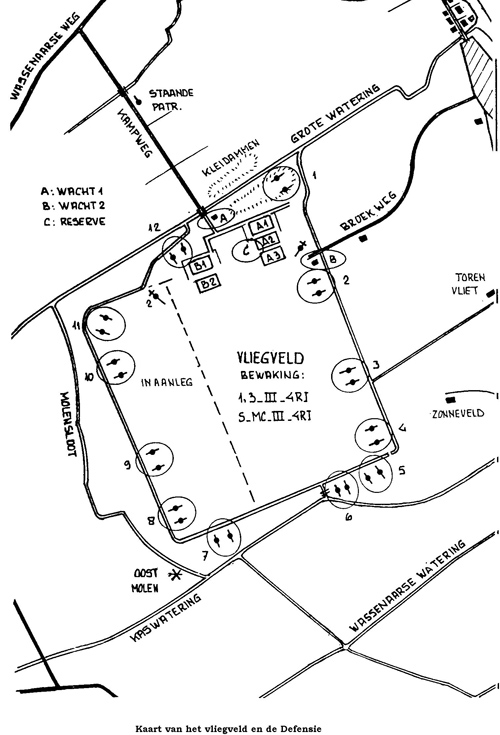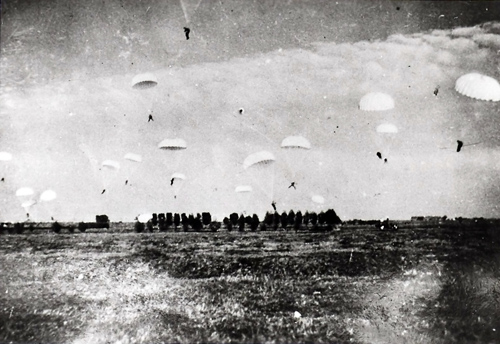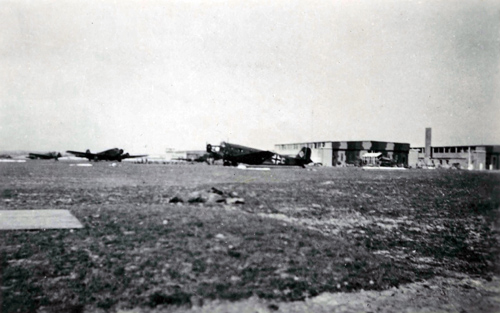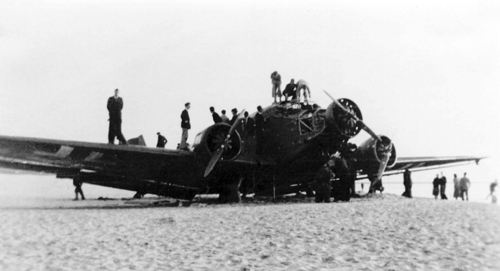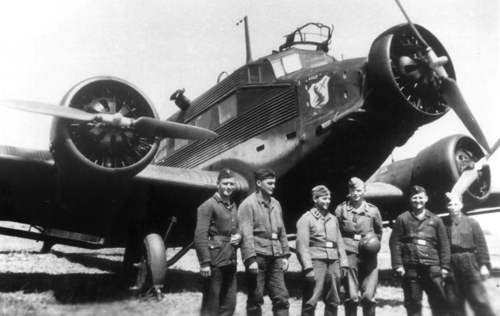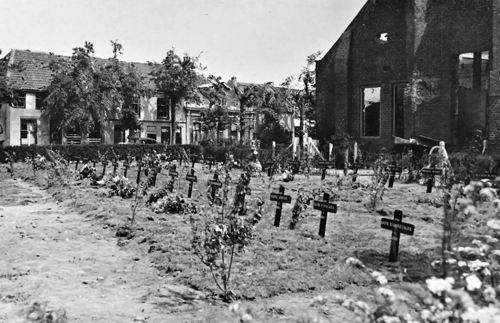Panel 1 The ‘May days’ of 1940
The German attack on 10 May 1940 started with a blunder. The Germans thought they could quickly arrest the royal family and the government via the airports around The Hague. It turned out completely differently.
The attack plan was called Operation ‘Fall Festung’. Germany expected little resistance from the Dutch army. The Germans would enter the Netherlands in three places and advance quickly to the west. At the same time, airborne troops had to land around The Hague, Rotterdam and Dordrecht.
Junkers Ju 52 transport planes would drop paratroopers over the airfields of Valkenburg, Ypenburg and Ockenburg and more planes would land with infantry soldiers a few hours later. The force would consist of approximately 10,000 soldiers, a third of whom had to land at and near Valkenburg airfield.
The paratroopers who came to Valkenburg were from the 6th Company of Fallschirm Jäger Regiment 2 (6./FJR.2). They had to capture the airfield so that Infantry Regiment 47 could land there. IR.47 had the task of defending the airfield, occupying the bridges over the Oude Rijn-river and closing the Leiden – The Hague highway. So much for the plan.
The attack on Valkenburg
The airfield was guarded on Friday morning, May 10, by approximately 450 soldiers of the 4th Infantry Regiment. Around 3 o’clock in the morning, six Heinkel 111 bombers flew high over Valkenburg to sea. The Germans returned after an hour and bombed and shelled the site and the hangars. This led to the first Dutch casualties.
Around 4.30 a.m., six Ju 52s appeared. They dropped the paratroopers who had to capture the airfield. One aircraft was then shot down and crashed into the sea near Katwijk. More Junkers with paratroopers followed, who landed south and north of the airfield according to plan.
When 57 Junkers landed at 5:20 a.m., the paratroopers had taken over the airfield. The intention was to have the planes take off again quickly and to pick up more troops in Germany. That day, around 250 flights had to take place.
Those flights were cancelled. Most of the site was not yet drained and therefore very swampy. Many Junkers sank into the soil. To make matters worse, they were shelled by Dutch artillery. Fokker C.V and C.X biplanes of the Netherlands Air Force dropped small bombs twice and shot at the Junkers. The shelling caused dozens of Ju 52s to go up in flames.
The plan fails
According to plan, 39 Junkers appeared at 9.25 am. They could not land, there was no space between the stranded planes. Many aircraft landed on the beach between Wassenaar and Katwijk. Others went to the highway near Delft or went back to Germany. Most of the German soldiers who were already at the airfield went to the village of Valkenburg in the afternoon to take shelter from the shelling.
At the end of the afternoon, the IIIrd Battalion 4th Infantry Regiment under the command of Major J. Mallinckrodt managed to recapture the airfield. It remained in Dutch hands until the capitulation on 14 May.
The German attack was a fiasco. The German intelligence service had terribly underestimated the resistance. As a result, the Germans only managed to land 950 to 1000 soldiers on Valkenburg, so not 3000, as was the plan.
About 90 Germans were killed on and around the airfield and the village. Germans were also taken prisoner of war. Some of them were transferred to England before the capitulation. Unfortunately, there were more casualties on the Dutch side: 208 soldiers died in the battle for Valkenburg.
The battle for the village
At the end of the first day, German troops were only left in the village of Valkenburg and in the dunes near Wassenaar. There the battle continued in all its intensity. The 4th Infantry Regiment tried to clear the village of enemies until the Dutch capitulation on
14 May. That did not work. The Germans did not want to surrender. To force them to do so, the village was shelled by Dutch artillery. Especially the Dutch Reformed Church (in the photo) was the target, because Germans had hidden in it. However, civilians and prisoners of war were also held here. A large part of the village was shot into rubble. The population had nowhere to go for five days. 22 civilians were killed.
